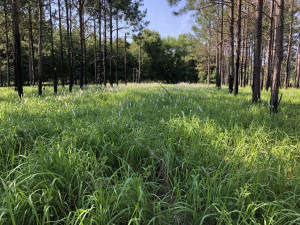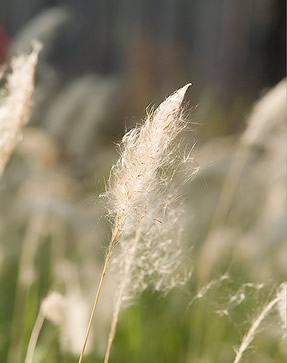
Cogongrass, Imperata cylindrica (L.), is considered the seventh worst weed in the world and is listed as a federal noxious weed by USDA Animal and Plant Health Inspection Service – Plant Protection and Quarantine.
Join the cogongrass eradication team in Georgia and be a part of protecting our state’s forest and wildlife habitat.
Report Cogongrass Sighting HereCogongrass was first introduced into the United States near Grand Bay, Alabama in 1911 via seed packing material in shipping containers from Japan. Since its introduction, it has become widespread throughout Alabama, Mississippi, and Florida and is moving into Georgia and South Carolina. This grass suppresses and eliminates natural vegetation thereby significantly reducing tree and plant regeneration, wildlife habitat, forage, and ecological diversity.
Cogongrass infestations are being found primarily in south Georgia, but is capable of growing throughout the state. It grows in numerous soil types with the exception of saturated soils and is highly adaptable from full sunlight to shade. Cogongrass invades forests, pastures, old fields, roadsides, utility rights-of-ways, and ditches. The grass spreads through both rhizomes and seed production. Forming dense mats, it is extremely flammable creating hazardous prescribed burning and wildfire conditions. Cogongrass is difficult to eradicate once it has become established due to the tremendous root system that must be completely eliminated.
The first step in eradicating cogongrass is educating individuals how to identify the grass. The most recognizable feature of cogongrass is the fluffy white seed heads that are produced in the spring (March-June) immediately following grass “green-up.” Cogongrass is the only warm season grass that produces cotton-like seeds in the spring. When not in the flowering stage, inspection of the roots is the most identifiable feature. Cogongrass has sharp pointed, scaly rhizomes with a very dense root system. It will usually grow in a circular-shaped pattern. Although not a sole identification feature, the grass also has an off-centered midrib on long leaf blades (1-5 feet).
 GFC is taking a proactive approach to eradicating cogongrass in Georgia, and formed the Cogongrass Task Force in 2004. A diverse group of government and private agencies and groups have joined forces within this Task Force into a collective effort to detect and eradicate this plant form our State. Anyone suspecting they have seen cogongrass should contact their local GFC office. A GFC representative will inspect the site. If confirmed to be cogongrass, a chemical eradication program will be initiated at no expense to the landowner. In the meantime, avoid mowing or disking through or near a known or suspected cogongrass spot since this could move seed or root fragments to other areas.
GFC is taking a proactive approach to eradicating cogongrass in Georgia, and formed the Cogongrass Task Force in 2004. A diverse group of government and private agencies and groups have joined forces within this Task Force into a collective effort to detect and eradicate this plant form our State. Anyone suspecting they have seen cogongrass should contact their local GFC office. A GFC representative will inspect the site. If confirmed to be cogongrass, a chemical eradication program will be initiated at no expense to the landowner. In the meantime, avoid mowing or disking through or near a known or suspected cogongrass spot since this could move seed or root fragments to other areas.
- 2025 Cogongrass Percent Inactive Map
- 2025 Cogongrass County Density Map
- 2025 Known Cogongrass in Georgia
- 2025 Cogongrass Winter Update
- Cogongrass: Identifying one of the Most Invasive Plant Species
- Cogongrass.org
- Cogongrass in Georgia
- Cogongrass in Georgia PSA
- Cogongrass Eradication Strategies
- Cogongrass Eradication Agreement
- Identifying Cogongrass (Field Guide)
We are happy to assist with any questions or concerns you may have. If you can’t find something you are looking for, please let us know, and we will be glad to help.
